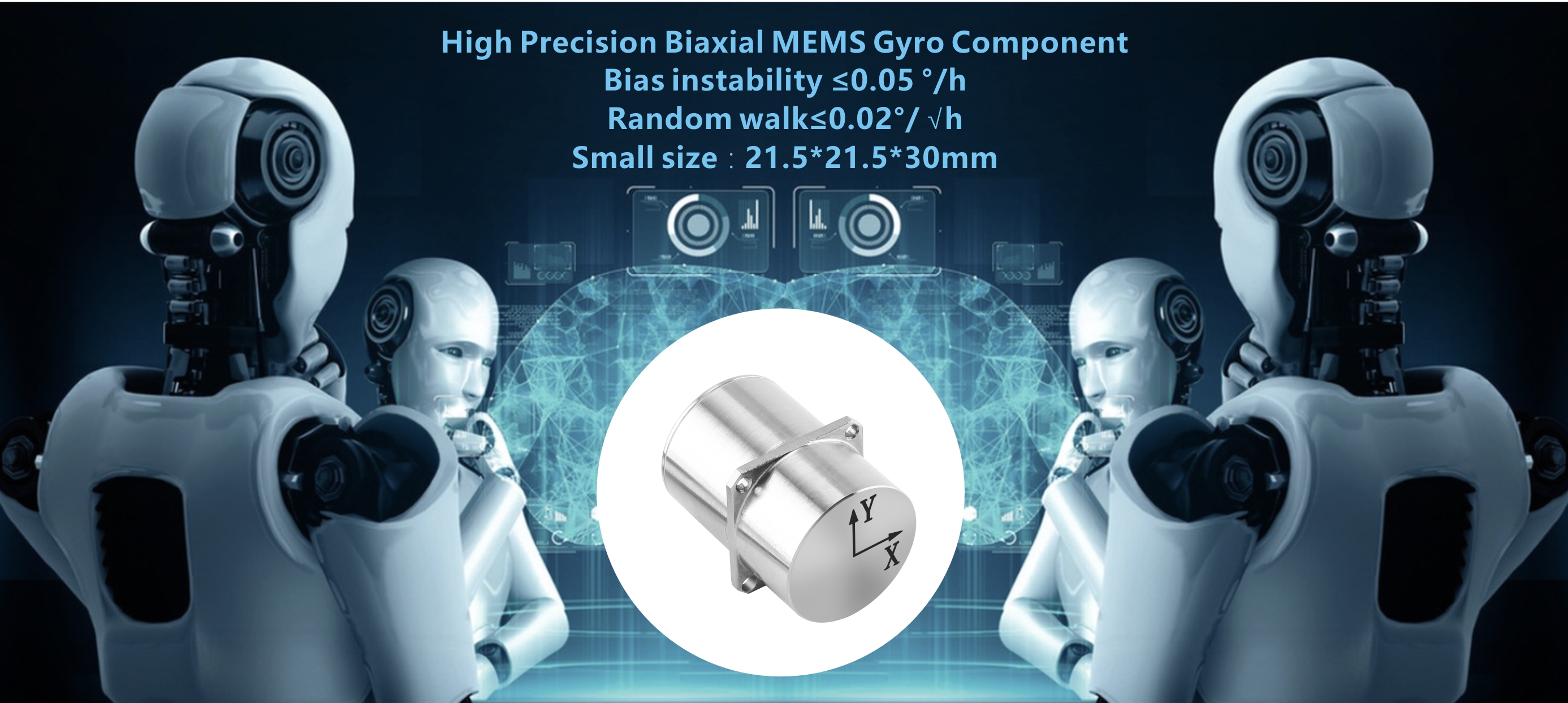Views: 0 Author: Site Editor Publish Time: 2025-06-12 Origin: Site












At the core sensing layer of intelligent devices and precision instruments, dual-axis MEMS gyroscopes are redefining the accuracy and reliability of motion measurement through disruptive technological breakthroughs. As the "gold standard" in the field of inertial navigation, they integrate micro-nano manufacturing processes with intelligent algorithms to provide precise sensing solutions characterized by high dynamic response, full-temperature stability, and extreme environment resistance for industries such as industrial automation, aerospace, and transportation.
Our dual-axis MEMS gyroscope integrates core algorithms such as full-temperature compensation, installation misalignment angle compensation, nonlinearity compensation, and zero-offset compensation. Through multi-sensor data fusion, it achieves zero-bias stability < 0.1°/hr and angle random walk < 0.01°/√h across a wide temperature range of -40°C to 85°C. Even in high-speed rail vibration environments (peak acceleration > 5g), it maintains dynamic response errors below 0.01°/s, reducing costs by over 60% compared to traditional fiber optic gyroscopes while preserving navigation-grade accuracy.
Adopting a four-mass dual-tuning fork drive structure, it realizes diagonal quadrant reverse motion through symmetrically distributed drive frames, forming a mechanically decoupled anti-vibration mode. Experimental data shows that its shock resistance exceeds 10,000g, far surpassing similar products.
3.Miniaturization and Low-Power Integration
The product measures only 21.5*21.5*30 mm (with casing), weighs less than 50g, and consumes under 200mW. Its single-layer planar structure simplifies the manufacturing process, enabling easy integration into space-constrained devices such as UAV flight control modules, medical robot joints, or vehicle stabilization systems to meet lightweight requirements across diverse scenarios.
The core chips and algorithms of our MEMS gyroscopes are fully localized, with 100% independent intellectual property rights from design to packaging. Performance parameters (such as zero-bias stability < 0.1°/hr) approach the level of tactical-grade fiber optic gyroscopes, having been mass-applied in aerospace satellites and shipborne systems, and certified for military-grade standards. The maturity of MEMS technology reduces the cost of our MEMS gyroscopes by over 90% compared to traditional fiber optic gyroscopes, while continuously improving integration capabilities with ASIC chips to form a complete industrial chain ecosystem. Its support for multi-interface protocols (RS-422/USB/Ethernet) is compatible with mainstream industrial buses, further expanding application scenarios.
With the integration of cutting-edge technologies like quantum sensing and optical communication, dual-axis MEMS gyroscopes will evolve toward higher precision, lower power consumption, and stronger integration. For instance, filter-type surface acoustic wave (SAW) dual-axis gyros enhance sensitivity and anti-jamming capabilities through extended beam design. Meanwhile, the deep application of AI algorithms will optimize data fusion, enabling collaborative sensing among multiple sensors to provide more reliable solutions for scenarios like autonomous driving and smart cities.
Our dual-axis MEMS gyroscope modules have become the "sensing heart" of intelligent equipment, leveraging threefold advantages: micro-nano precision, industrial-grade reliability, and intelligent integration. Whether in deep-sea exploration, space discovery, intelligent manufacturing, or medical care, this technology continuously pushes the boundaries of human understanding in motion sensing. Choosing us means embracing the technological coordinate system of the future—where every movement is precisely controlled!